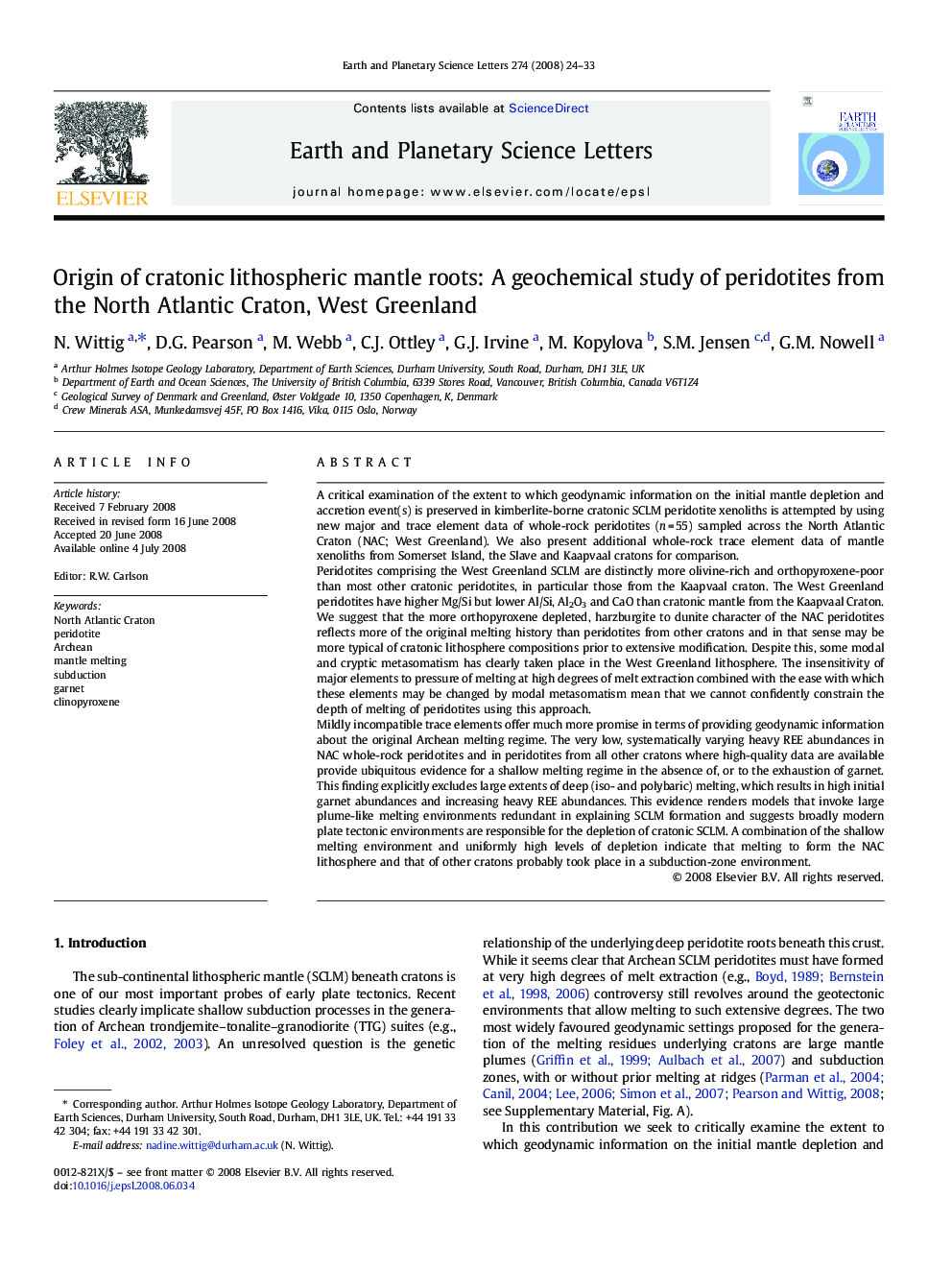| کد مقاله | کد نشریه | سال انتشار | مقاله انگلیسی | نسخه تمام متن |
|---|---|---|---|---|
| 4679377 | 1634888 | 2008 | 10 صفحه PDF | دانلود رایگان |

A critical examination of the extent to which geodynamic information on the initial mantle depletion and accretion event(s) is preserved in kimberlite-borne cratonic SCLM peridotite xenoliths is attempted by using new major and trace element data of whole-rock peridotites (n = 55) sampled across the North Atlantic Craton (NAC; West Greenland). We also present additional whole-rock trace element data of mantle xenoliths from Somerset Island, the Slave and Kaapvaal cratons for comparison.Peridotites comprising the West Greenland SCLM are distinctly more olivine-rich and orthopyroxene-poor than most other cratonic peridotites, in particular those from the Kaapvaal craton. The West Greenland peridotites have higher Mg/Si but lower Al/Si, Al2O3 and CaO than cratonic mantle from the Kaapvaal Craton. We suggest that the more orthopyroxene depleted, harzburgite to dunite character of the NAC peridotites reflects more of the original melting history than peridotites from other cratons and in that sense may be more typical of cratonic lithosphere compositions prior to extensive modification. Despite this, some modal and cryptic metasomatism has clearly taken place in the West Greenland lithosphere. The insensitivity of major elements to pressure of melting at high degrees of melt extraction combined with the ease with which these elements may be changed by modal metasomatism mean that we cannot confidently constrain the depth of melting of peridotites using this approach.Mildly incompatible trace elements offer much more promise in terms of providing geodynamic information about the original Archean melting regime. The very low, systematically varying heavy REE abundances in NAC whole-rock peridotites and in peridotites from all other cratons where high-quality data are available provide ubiquitous evidence for a shallow melting regime in the absence of, or to the exhaustion of garnet. This finding explicitly excludes large extents of deep (iso- and polybaric) melting, which results in high initial garnet abundances and increasing heavy REE abundances. This evidence renders models that invoke large plume-like melting environments redundant in explaining SCLM formation and suggests broadly modern plate tectonic environments are responsible for the depletion of cratonic SCLM. A combination of the shallow melting environment and uniformly high levels of depletion indicate that melting to form the NAC lithosphere and that of other cratons probably took place in a subduction-zone environment.
Journal: Earth and Planetary Science Letters - Volume 274, Issues 1–2, 30 September 2008, Pages 24–33